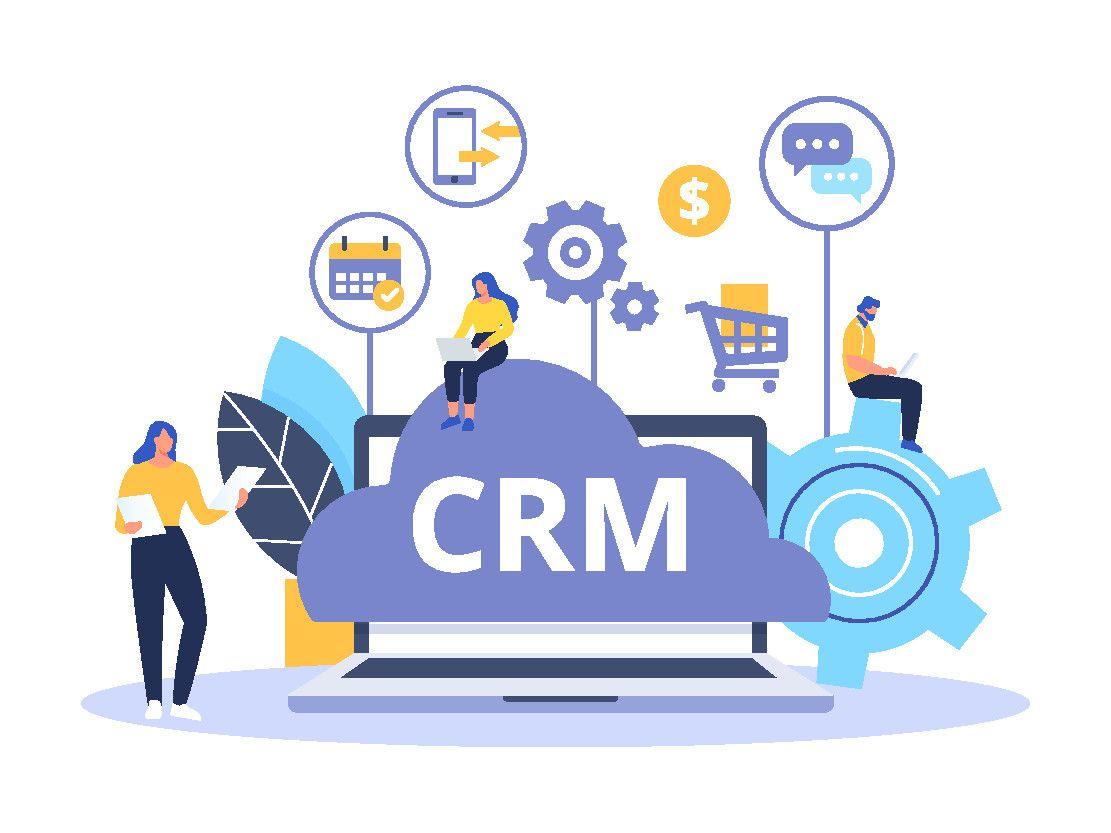Published April 17, 2023

Could NFTs Be a Solution?
One solution lies in leveraging emerging technologies such as NFTs and wallets, which offer secure and private methods of storing and managing customer data. With NFTs, marketers can leverage blockchain technology to create unique and personalized experiences for their customers. These digital assets can be used to deliver exclusive content, access to limited promotions, or special discounts to create a sense of exclusivity and value for customers. NFTs also offer a pseudonymous approach to customer data, preserving privacy while still enabling targeted marketing efforts. Customers can engage with NFT-based campaigns without revealing their true identity, which can alleviate concerns about intrusive data collection and protect their privacy.
NFTs in an Effective CRM System
Well-thought-out CRM systems are essential for managing customer relationships and encompass four key aspects: contact management, interaction tracking, real-time communication, and workflow automation. These elements work together to streamline and enhance customer interactions, ensuring smooth communication, efficient tracking of interactions, and automated workflows to improve overall customer relationship management. In the case of NFTs, each token acts as a digital receipt, capturing information such as the buyer, receiver, or interactions associated with the asset, which is permanently recorded on the blockchain.
This record of interactions between parties lays the groundwork for NFTs to operate akin to a customer relationship management (CRM) system.
NFTs: Disrupting Traditional CRM Systems
1. Contact Management Reimagined with NFTs
The transparency of blockchain transactions, including NFTs, allows for brand visibility of NFT owners through publicly stored transaction data. While the current identification of NFT owners is limited to their wallet addresses, which may not link to real-world identities, the associated transactions provide valuable data points that can reveal the demographics and interests of the holders. This data can potentially enhance brand understanding of their customer base, leading to more targeted marketing and engagement efforts based on the insights gleaned from NFT transaction data. As the Web3 space continues to evolve, emerging technologies may eventually combine these transparent NFT identities to provide marketers with a more comprehensive understanding of their customers and prospects.
2. Interaction Tracking
Consider this scenario: You organize an event, whether in a physical location or a virtual metaverse.
As part of the event, you offer POAP tokens, or "Proof of Attendance Protocol" NFTs, to the attendees. These POAP NFTs serve as digital memorabilia, similar to concert T-shirts, but with a distinct advantage – each POAP NFT is uniquely tied to the original purchaser who wants to showcase their attendance at the specific event. They are non-transferable and are stored on a publicly distributed ledger or blockchain, preserving the attendance record permanently. The crypto wallet associated with the attendee's NFT serves as verifiable proof of their participation, creating a transparent and immutable record of their presence at the event. A POAP NFT represents authenticity and exclusivity, as it cannot be transferred to another person or faked to have attended an event. Attendees can proudly showcase their POAP NFT to friends and acquaintances in the digital world, just like how Twitter verifies NFT profile pictures. Although the technology for displaying NFTs seamlessly may currently be in development, it is expected to become more refined in the coming months, allowing for smooth and effortless sharing of POAP NFTs as a badge of attendance and participation.
3. Real-Time Communication
An example of how NFTs can facilitate real-time communication is through the sale of physical items, such as shoes, that come with a digital counterpart. This digital counterpart, in the form of an NFT, can be worn in augmented reality, showcased on social media, or used in virtual games like Fortnite, creating a "phygital" offering. When a buyer purchases the physical item and downloads the NFT to their crypto wallet, it immediately alerts the brand and provides valuable data that forms the buyer's identity. If the original transaction also included an email address, the marketer now has access to even more customer information, resulting in a more complete and comprehensive picture of the customer. This real-time communication facilitated by NFTs allows brands to engage with customers in a personalized and timely manner. Brands can leverage this data to send targeted promotions, updates, or exclusive content directly to the NFT holders, creating a direct and interactive communication channel that enhances customer engagement and loyalty. All of this comes together to enrich customer data and enable marketers to create a more holistic view of their customers, leading to more effective and relevant marketing strategies. Once the customer's wallet is connected, the possibilities for real-time communication with NFTs are endless. Marketers can use customers' wallets as a mailbox, delivering timely information, offers, and exclusive experiences directly to them.
Through messaging, offers, and unique spaces like Discord channels or real-life and metaverse events, marketers can engage customers and immerse them further into their brand world.
4. Workflow Automation
At its core, an NFT functions as a digital receipt that represents a collection of smart contracts. These smart contracts contain programmable code that can be executed on a blockchain, making them inherently automated. The terms and conditions specified in the smart contracts are automatically enforced, without the need for intermediaries or manual intervention. The automation aspect of NFTs enables a wide range of functionalities. For example, NFTs can automatically trigger royalties payments to artists or creators whenever the NFT is sold or transferred to a new owner. They can also automate ownership verification, provenance tracking, and other digital asset management processes. The use of smart contracts in NFTs provides a high level of transparency, security, and efficiency. Once the smart contract is deployed on the blockchain, it becomes immutable and tamper-proof, ensuring that the contract terms are executed as intended. This eliminates the need for trust in intermediaries and enables a decentralized and automated system. Automation presents in many ways. For example, brands can utilize features like airdrops, where additional NFTs are automatically sent to the wallets of existing NFT holders. This can be used as a marketing tactic to reward loyalty or provide exclusive content to NFT holders. Brands can also create exclusive channels or communities specifically for NFT holders, where automated notifications or updates can be shared in real-time. As the technology behind NFTs continues to evolve, we can expect to see more innovative use cases of automated workflows in NFT communications.
How to Get Ready for NFTs in Marketing: Best Practices
With the rapid rise in NFT popularity, it's evident that NFT technologies will soon become a prominent part of the marketing landscape.
Emerging startups like Arianee are actively working on creating user-friendly mechanisms for marketers to connect with customers using NFTs.
As a forward-thinking marketer, it's crucial to personally explore the potential of NFTs by engaging with various brands and groups that are utilizing this technology, such as buying or minting an NFT for experimentation and learning purposes.
It's essential for proficient marketers to understand the preferences and expectations of their customer base when it comes to NFTs.
Final Thoughts
While NFTs may not completely replace traditional CRM methods, they are poised to become a valuable addition to the marketing mix.
With their unique capabilities for tracking, communication, automation, and customer engagement, NFTs offer a new channel that can enhance marketing strategies and provide exciting opportunities for brands to connect with their audience in innovative ways.
As the NFT space continues to evolve, marketers should consider incorporating NFTs into their marketing toolkit to leverage the full potential of this emerging technology.
Building an NFT app and want to tap into the power of BlockSpan’s NFT API? Find out how we can help you build in just days, not months.



